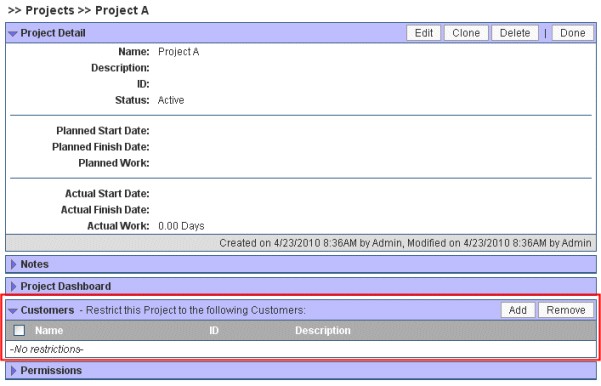|
Work Breakdown Structure
|   |
Work Breakdown Structure
The work breakdown structure (WBS) is used to organize work into a series of components, such as projects, phases, tasks, etc. You can define up to 5 components, and name each level as you need. For instance, your organization might have the following WBS:
Client > Project > Phase > Task
Or
Task > Labor Code
WBS components have the following properties:
|
Property |
Description |
|
Enabled |
Indicates whether the component is enabled. |
|
Dependent |
If checked then the component may depend on the previous component. For example, if you have a two level WBS composed of Projects and Tasks, checking the dependent check box for the Task would indicate that the list of tasks presented to an employee might depend on which project was selected. See the Dependencies section below for more information. |
|
Name |
The singular name of the component, for example "Client". |
|
Plural |
The plural name of the component, for example "Clients". |
Dependencies
Dependencies allow you to limit or scope which items can be added to a timesheet based on a previous selection in the WBS structure. For instance, you might want to limit some projects to specific customers. To do this you would check the appropriate "Dependent" check box:

Checking this dependent check box indicates that a project depends on the parent component above it, in this case the customer. Now when you view the properties for a project (from the Tasks > Projects page) you will see a Customers section:

If you leave the Customers section blank (no restrictions) then this project will be available regardless of the selected customer. This allows you to have 'global' components that are always available, whether a parent selection is made or not. To limit this project to one or more specific customers click the Add button and add the appropriate customers. Then, when employees browse for projects to add to their timesheet, they will not see this project unless one of the customers in the list is selected first.
Note that dependencies take effect on the timesheet page, as well as for reports that allow you to filter based on customers, projects, etc., such as the "Timesheet Details" report.